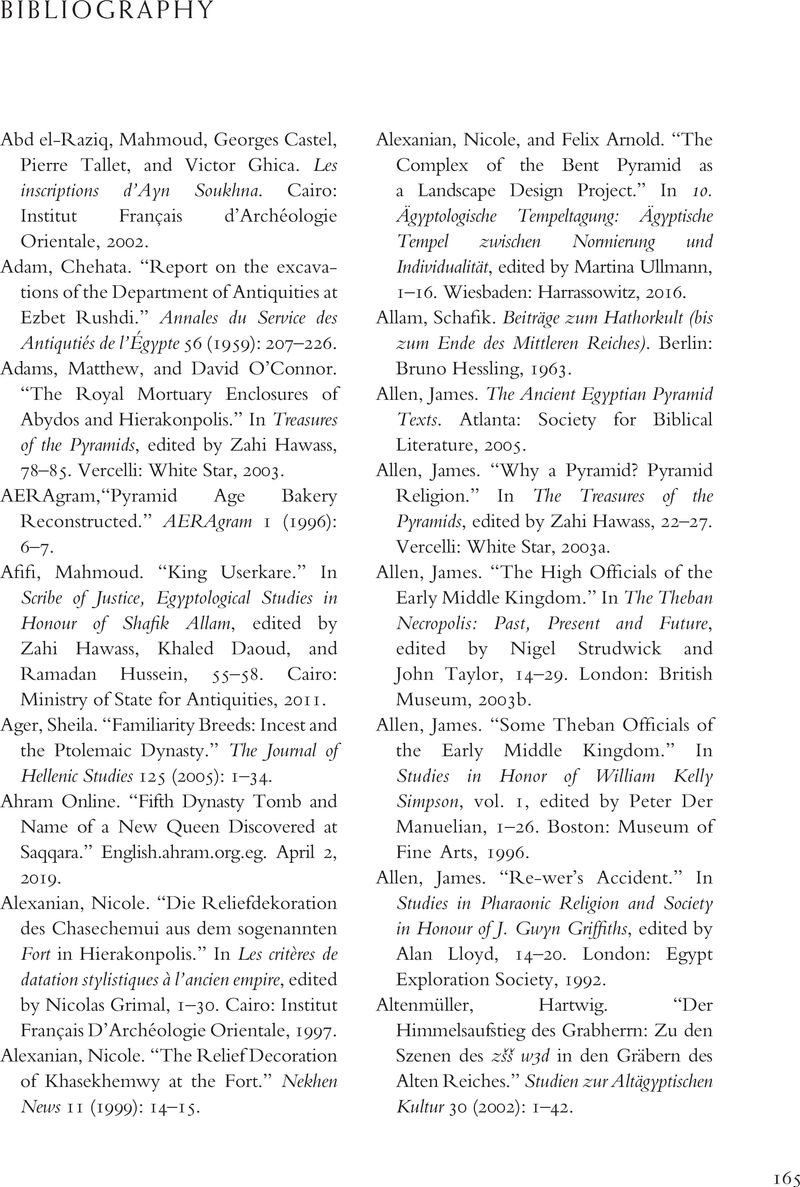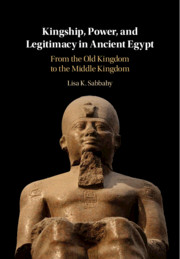Book contents
- Kingship, Power, and Legitimacy in Ancient Egypt
- Kingship, Power, and Legitimacy in Ancient Egypt
- Copyright page
- Contents
- Figures
- Preface
- Acknowledgments
- Introduction
- Chapter One Background to Ancient Egypt
- Chapter Two The Early Old Kingdom
- Chapter Three The Later Old Kingdom
- Chapter Four The Early Middle Kingdom Reunifies Egypt
- Chapter Five The Beginning of the Twelfth Dynasty
- Conclusion
- Bibliography
- Index
- References
Bibliography
Published online by Cambridge University Press: 26 November 2020
- Kingship, Power, and Legitimacy in Ancient Egypt
- Kingship, Power, and Legitimacy in Ancient Egypt
- Copyright page
- Contents
- Figures
- Preface
- Acknowledgments
- Introduction
- Chapter One Background to Ancient Egypt
- Chapter Two The Early Old Kingdom
- Chapter Three The Later Old Kingdom
- Chapter Four The Early Middle Kingdom Reunifies Egypt
- Chapter Five The Beginning of the Twelfth Dynasty
- Conclusion
- Bibliography
- Index
- References
Summary

- Type
- Chapter
- Information
- Kingship, Power, and Legitimacy in Ancient EgyptFrom the Old Kingdom to the Middle Kingdom, pp. 165 - 202Publisher: Cambridge University PressPrint publication year: 2020



